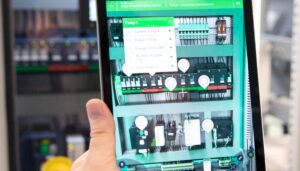In a previous blog post, we explained the importance of True Reliability and how some foundational international standards help manufacturers build power meters that provide accurate data to be used in critical applications.
Having a truly reliable monitoring device is certainly the starting point for any business that relies on power availability, but it is certainly not enough. What use it is for engineers and facility managers to have access to highly accurate data if they can’t understand what it means if they can’t get real insight from that data?
That’s the reason we believe advanced metering devices should not only be truly reliable devices but also, most importantly, they should provide information that helps users to achieve tangible results, information that is meaningful and actionable. That is where the true value lies.

Traditional Power Quality data reporting
There are quite a few examples of international standards that define limits for power quality parameters within an electrical network. Standards such as the popular IEEE 519 and EN 50160, for example. Most advanced metering devices report data using these standards as a reference, assessing parameters against limits defined by the standards, and alerting the users when their systems are operating outside those limits.
This works well in highly regulated environments, where electrical utilities are contractually required to provide a certain level of service to customers. But for most users, especially on the demand side (industries, commercial buildings, critical buildings, etc.), this assessment data provides only a partial picture of the overall system health. Here are a couple reasons why:
- The data does not provide much insight into the actual causes of power quality events. Without that information, users are often unsuccessful when trying to prevent similar events from happening again in the future.
- The data also does not fully capture the particularities of different electrical distribution systems. Different electrical architectures and assets will have different levels of resilience to power quality events. If data is not analyzed within this context, users will very likely be flooded with information that really is not meaningful.
With the above in mind, it’s a fair expectation that advanced metering devices should not only provide data defined by the international standards but also derive contextual actionable information that can drive tangible results and help users with what really matters:
- Tracking the health and performance of the assets within the electrical distribution system
- Planning contingency & resilience scenarios to ensure operations aren’t disrupted when “typical” events occur
- When “atypical” events occur, the source/cause can be quickly ascertained, hereby expediting a prompt recovery to normal operations.
The workforce dynamics
Another important aspect that is accelerating the need for tangible results is related to the dynamics in the workforce and the work environment.
Modern workers often have many different responsibilities and do not have the time, or the need, to be as specialized in one subject matter as they were in the past. They need to juggle different priorities in a highly dynamic work environment, so they simply don’t have the capacity to deal with data overload; they just need to know what to do and why. They expect intelligent devices and systems to help them in their work environment in a similar way that streaming services help them to choose meaningful content to consume.
Not only are workers changing, but businesses of all kinds are evolving at a similar pace. Product life cycles are shorter, customers are more engaged, information is more available than ever before. Agility is the new name of the game and nimble adaptation is essential.
This reality poses a few questions:
- Who can really spend the time diving deep into data and trying to understand the dynamics of a complicated electrical system?
- Shouldn’t that be the job of the specialists supplying the electrical infrastructure?
- Shouldn’t that infrastructure be capable of adapting and learning to better serve my purposes?
We believe the answers to the questions above are: Nobody, Yes, and Yes! But most metering manufacturers today are still leveraging the “old approach”; building devices that produce a lot of data, but almost zero information for the non-specialist professional.
The path to tangible results
From our point of view, the path to tangible results needs to be built around two main principles:
- Data reporting that goes beyond what is pre-defined in international standards: focusing on value to end users. Information such as the location of where a certain event was generated, what caused the event, what parts of the system were affected, and the financial impact incurred by such event. This is meaningful information that provides the necessary context to achieve tangible results.
- Leveraging AI and embedded analytics to achieve customer intimacy: just like consumer marketing is getting closer to individual relationships with customers, with highly customized advertisement and services, the advanced metering devices should leverage similar technologies to truly understand the specificities of each electrical system providing substantive information which can drive to very targeted tangible results
These are exciting times for a traditional industry that has not seen much innovation in the last few years, but not a lot of manufacturers seemed to have fully grasped the opportunity. The challenge of today’s meter manufacturer is to extract the value found in historic PQ assessments and evolve and adapt it to the changing needs of the modern grid & workforce.
One way this can be accomplished is by leveraging tools (like SW, AI & analytics) to extend the scope of these PQ assessments and to recast the historical pile-of-data into bite-sized actionable information. This “bite-sized synthesis” approach will enable users to realize an improvement in their overall electrical distribution system health & performance. One of the benefits to focusing on delivering tangible results will come from the most “intangible benefit” of them all … Customer satisfaction!
To learn more about the topics discussed here, please have a look at the information below:



